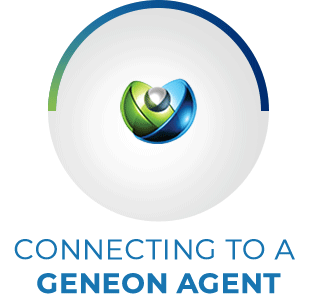Learn About the Dangers of Quat Binding
March 14, 2022
CleanLink's 2015 article titled "
What Is Quat Binding and Why It Must Be Prevented," Becky Mollenkamp sheds light on a phenomenon that has been affecting the sanitizing and disinfecting industry in recent years.
Quat binding refers to the absorption of quaternary ammonium chloride, which is an active ingredient in many disinfectants. Basically, quaternary ammonium chloride is absorbed by fabrics because quats contain positively charged ions that are attracted to the negatively charged ions found in natural textiles like cotton.

When quat binding occurs, part of the disinfectant is embedded into the material. At the same time, not enough of the disinfectant is on the surface of the material used for cleaning; therefore, less disinfectant is applied when used to wipe a surface down.
In fact, a recent study showed that the cloth absorbed with quaternary ammonium chloride disinfectant lost up to 50% of its disinfecting power when left soaking for 10 minutes in a solution-filled bucket.
Quat binding makes disinfectants considerably less effective at killing harmful pathogens on surfaces, and they may form a resistance to disinfectants. The results leave people more vulnerable, especially the custodian workers charged with handling these products.
Many people remain in the dark about the dangers of quat binding. And others have chosen to ignore the issue entirely, either due to financial concerns or simply because they don't deem it important enough.
As stated by John Scherberger, BS, CHESP, REH, principal at Healthcare Risk Mitigation in Spartanburg, South Carolina, this indifference reflects a lack of care toward building occupants and the staff working with these products on the regular.
When we focus on
the dangers of quat binding in foodservice we see how the consequences have drawn most of the public attention, even when the issue ultimately affects people in all industries.
According to Tara Millar, product manager at ITW Pro Brands in Olathe, Kansas, "Fifty percent of the foodservice industry uses cotton rental towels or bar towels."

There is no training to prevent quat binding among the staff at restaurants, cafeterias, and other food establishments, nor is there any pH-testing for the chemicals used in the industry. As a result, 3,000 people die from foodborne illnesses each year.
What's the Best Course of Action?
While an alarming number of businesses seem to be unaware of the dangers of quat binding, there are short-term tactics to help minimize the risks. The first line of defense comes with the custodian staff and how they handle their cleaning and disinfecting products.
When it comes to the right way of using chemical products, CleanLink's article lists three major approaches:
- Spray and wipe: This method consists of directly applying the cleaner/disinfectant to the surface without using any cloth to spread it. The problems with this method are inaccurate spraying techniques and the potential for someone to overspray surfaces and accidentally inhale the chemicals. This approach could also increase the risks of releasing too many chemicals into the air.
- Dip and wipe: This method would entail dipping the cloth into disinfectant and wringing out the excess solutions right after. Since there's still contact between the chemicals and the fabric, this method wouldn't entirely rule out the chances of quat binding.
- Soak and wipe: As the name suggests, this would entail letting a cloth or mop sit for a window of time after soaking it with disinfectant. The waiting period could go from 10 minutes to several hours. As you probably guessed, this method would only increase the risks you already have with the 'dip and wipe' approach as your cleaning tools now have enough time to absorb the quat solution.
Given their obvious drawbacks, these could only be short-term solutions to get by while implementing a more stable approach. Many specialists agree that the safest option is to remove the risks of quat absorption from the get-go. For this, they recommend either using non-quat products or switching to microfiber or micro denier textiles when using quat disinfectants.

As the negative health effects of quat binding gain more public attention, manufacturers have also started providing other options. Some have altered the chemical concentration on their disinfectants to reduce the chances of quat absorption, while others have developed textiles that are more resistant to it.
The truth remains that quat-based chemicals are still a profitable option in many parts of the market, which only makes things more uncertain for custodian workers and your average consumer.
The ideal solution would be to implement chemical-free disinfectants to maintain and even increase your hygiene standards. This is where electrolyzed water comes in.
Instead of potentially reducing productivity, this sustainable system would provide more disinfecting power against harmful pathogens while simplifying your staff's cleaning routine.
Accessible to both small businesses and well-established companies, electrolyzed water disinfectants are more reliable if your goal is to help prevent an outbreak among your patrons/staff. And there would be no need to have additional concerns over harmful chemicals when all the work is done by a non-toxic disinfectant like hypochlorous acid.
The bottom line is that industries need to join forces, and help educate the market on safer alternatives to harsh and toxic chemicals.
You can read the complete article here:
What Is Quat Binding and Why It Must Be Prevented.





